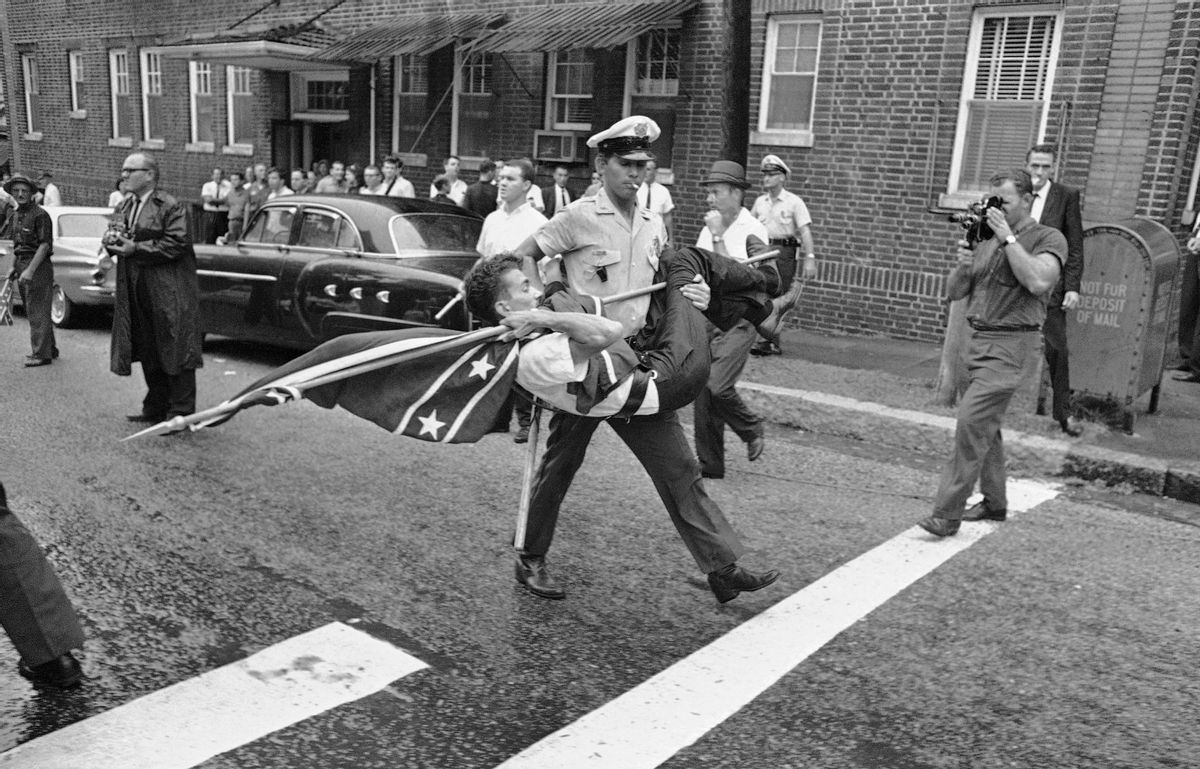The Confederate battle flag has been removed from South Carolina's Statehouse grounds, in the wake of the massacre of nine African-Americans — including a state senator — at a historic black church in Charleston last month. The successful push for the rebel banner's removal came after Dylann Storm Roof, the white suspect charged with murder, appeared in widely seen photos holding Confederate flags. The swift decision to remove the flag comes five decades after it was raised to commemorate the American Civil War's centennial and remained at the Statehouse to protest the civil rights movement. Here's a brief explanation of the Confederate battle flag, a historic but deeply divisive symbol that remains present in the American South.
THE CONFEDERATE BATTLE FLAG: A LONG, TANGLED HISTORY
During the American Civil War (1861-1865), the military of the secessionist, pro-slavery South flew several styles of Confederate battle flags — what most Americans think of as the Confederate flag. Separately, the rebel government also flew several Confederate national flags. What became the lasting symbol of the rebel South and is now known as the "Confederate flag" or "rebel flag" is the rectangular version of the Confederate Army battle flag — a star-studded blue 'X' overlaying a red field. This version was flown by various Confederate Army units, including the biggest, Gen. Robert E. Lee's Army of Northern Virginia. The flag is used to honor Confederate war dead and is embraced by many white Southerners who say it symbolizes Southern and ancestral pride. Parts of its design were incorporated into the state flags of Mississippi, Georgia, Florida and Alabama — against the wishes of African-American civil rights groups who viewed it as a symbol of a brutally oppressive past. The flag has been flown over several Southern cities and has also been adopted by white supremacist groups like the Ku Klux Klan.
THE FLAG IN SOUTH CAROLINA AND AROUND THE SOUTH
South Carolina was the first of 11 states to secede from the federal Union in December 1860; the first shots of the Civil War were fired at Fort Sumter, near Charleston. At the base of the Statehouse's Confederate monument, the rebel flag had flown atop a pole since it was moved there from the Statehouse dome in a 2000 compromise. South Carolina Gov. Nikki Haley called for the flag's removal and signed a bill to have it moved to a state museum. It was taken down during a ceremony Friday morning. The Confederate flag was first raised in the South Carolina House of Representatives chambers in 1938 but was not raised over the Statehouse until 1961. Opponents of the flag have called for years for its removal from Statehouse grounds, and South Carolina lawmakers this week voted to take it down. The rebel flag is also now gone from the Alabama Capitol, and the U.S. House of Representatives voted that it can no longer be displayed at historic national cemeteries.



Shares